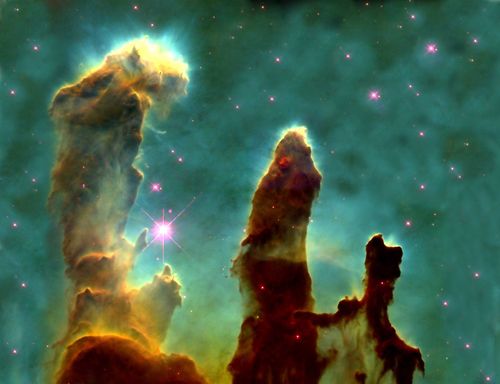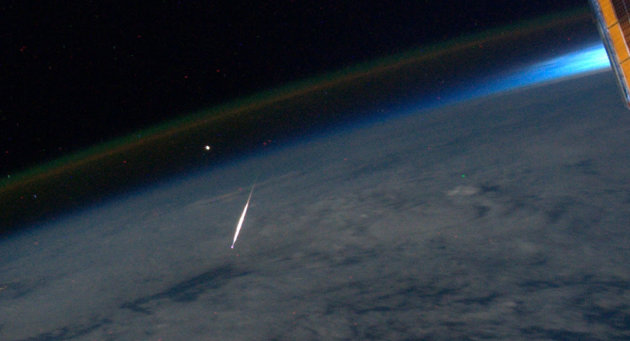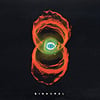Dorky stuff about the Universe
Comments
-
stfu! i'm scared & pissed now. for the rest of my life i'll be worried now.Jason P wrote:
That is cool.mikalina wrote:This is incredibly beautiful - I find this stunning.
http://www.newscientist.com/blogs/short ... h-res.html
Side Note. M31 (Andromeda) is on a path to collide with the Milky Way, destroying both galaxies in the process. Don't worry, it won't happen until 4 billion years from now ... almost 2 billion years after Earth is inhabitable.
i believe in reincarnation. this has my grand plans shot to shit
thanks for ruining my morning...my life for poetry through the ceiling. ISBN: 1 4241 8840 7
for poetry through the ceiling. ISBN: 1 4241 8840 7
"Hear me, my chiefs!
I am tired; my heart is
sick and sad. From where
the sun stands I will fight
no more forever."
Chief Joseph - Nez Perce0 -
I have limited access to a telescope. This past week I saw Saturn, Mars, Spica, M13, Vega, Deneb, and Altair (the Summer Triangle). Also saw Cygnus and Albireo. Several people I was with saw shooting stars.0
-
Not only did nothing show here, but for some reason we both had a shit-night of sleep. Saturday night should, ideally, provide THE best sleep of the week.
hrrmph.
Although, around 3:30am, I STILL couldn't get into the sleep-zone so got up and sat by the window, hit the bowl a couple of times. Moon was aligned between two bright stars, on the diagonal. So unexpected and pretty, kind of made up for not being able to see the showers from here.
(chadwick - sorry, but your post brought me a smile)0 -
hedonist wrote:Not only did nothing show here, but for some reason we both had a shit-night of sleep. Saturday night should, ideally, provide THE best sleep of the week.
hrrmph.
Although, around 3:30am, I STILL couldn't get into the sleep-zone so got up and sat by the window, hit the bowl a couple of times. Moon was aligned between two bright stars, on the diagonal. So unexpected and pretty, kind of made up for not being able to see the showers from here.
(chadwick - sorry, but your post brought me a smile)
Hedonist- it's always a bummer when sleep eludes. Not many of us are Keith Richards.
Chadwick- regarding your reincarnation- look at it this way: All your thoughts are electrical impulses in you brain that emanate out into space. Tiny traces of these electrical impulses travel through space which, according to Einstein is curved. By the time those thoughts come back around, maybe the two galaxies will have gotten over their little feud, another one will have taken their place and you'll have a safe place to land."It's a sad and beautiful world"-Roberto Benigni0 -
perhaps the two bright stars you were seeing beside the moon weren't stars after all but were planets, yes/no?hedonist wrote:Not only did nothing show here, but for some reason we both had a shit-night of sleep. Saturday night should, ideally, provide THE best sleep of the week.
hrrmph.
Although, around 3:30am, I STILL couldn't get into the sleep-zone so got up and sat by the window, hit the bowl a couple of times. Moon was aligned between two bright stars, on the diagonal. So unexpected and pretty, kind of made up for not being able to see the showers from here.
(chadwick - sorry, but your post brought me a smile)
i forget their names but there were two planets dancing around the sky this past winter and spring. i'd watch them every night whilst walking the park. one being brighter than the other.... trying to remember which planets they are.......hhhmmmm
my posted usually bring tears and someone wanting to punch me in the fudd. i am pleased you smiledfor poetry through the ceiling. ISBN: 1 4241 8840 7
"Hear me, my chiefs!
I am tired; my heart is
sick and sad. From where
the sun stands I will fight
no more forever."
Chief Joseph - Nez Perce0 -
brianlux - you're the chit, sir!
yes every sound, every single breath and whatever other energies we got goin on does travel up into the universe. this is why karma and the like are so very important.for poetry through the ceiling. ISBN: 1 4241 8840 7
"Hear me, my chiefs!
I am tired; my heart is
sick and sad. From where
the sun stands I will fight
no more forever."
Chief Joseph - Nez Perce0 -
chadwick wrote:brianlux - you're the chit, sir!
yes every sound, every single breath and whatever other energies we got goin on does travel up into the universe. this is why karma and the like are so very important.
Yes! So true!"It's a sad and beautiful world"-Roberto Benigni0 -
You are not fudd-punchworthy - this is meant in the best of ways.chadwick wrote:
perhaps the two bright stars you were seeing beside the moon weren't stars after all but were planets, yes/no?hedonist wrote:Not only did nothing show here, but for some reason we both had a shit-night of sleep. Saturday night should, ideally, provide THE best sleep of the week.
hrrmph.
Although, around 3:30am, I STILL couldn't get into the sleep-zone so got up and sat by the window, hit the bowl a couple of times. Moon was aligned between two bright stars, on the diagonal. So unexpected and pretty, kind of made up for not being able to see the showers from here.
(chadwick - sorry, but your post brought me a smile)
i forget their names but there were two planets dancing around the sky this past winter and spring. i'd watch them every night whilst walking the park. one being brighter than the other.... trying to remember which planets they are.......hhhmmmm
my posted usually bring tears and someone wanting to punch me in the fudd. i am pleased you smiled
And now that you mention it, I think one of those stars is actually Venus.0 -
hedonist wrote:Not only did nothing show here, but for some reason we both had a shit-night of sleep. Saturday night should, ideally, provide THE best sleep of the week.
hrrmph.
Although, around 3:30am, I STILL couldn't get into the sleep-zone so got up and sat by the window, hit the bowl a couple of times. Moon was aligned between two bright stars, on the diagonal. So unexpected and pretty, kind of made up for not being able to see the showers from here.
(chadwick - sorry, but your post brought me a smile)
how long did you look. You have to look for a very long time to see just one sometimes0 -
chadwick wrote:
perhaps the two bright stars you were seeing beside the moon weren't stars after all but were planets, yes/no?hedonist wrote:Not only did nothing show here, but for some reason we both had a shit-night of sleep. Saturday night should, ideally, provide THE best sleep of the week.
hrrmph.
Although, around 3:30am, I STILL couldn't get into the sleep-zone so got up and sat by the window, hit the bowl a couple of times. Moon was aligned between two bright stars, on the diagonal. So unexpected and pretty, kind of made up for not being able to see the showers from here.
(chadwick - sorry, but your post brought me a smile)
i forget their names but there were two planets dancing around the sky this past winter and spring. i'd watch them every night whilst walking the park. one being brighter than the other.... trying to remember which planets they are.......hhhmmmm
They were Jupiter & Venus.
Jupiter & Venus are very probably what you seen hedonist. They're making their appearance pre-dawn rather than post-dusk... 0
0 -
Ah, thank you, rollings. Except the moon was smack-dab in-between them! It was really quite gorgeous, unexpectedly so, at that sleepy hour.rollings wrote:They were Jupiter & Venus.
Jupiter & Venus are very probably what you seen hedonist. They're making their appearance pre-dawn rather than post-dusk...
I've used the term "humbling" so much when I compare the tininess of myself to all of THAT out there...though we're both (all) nature, the proportions of it all and of me to it, well...I still sometimes need and welcome the reminder.0 -
I don't know if I posted this in this thread but......enjoy!
Scale of the Universe.....after it loads, drag the marker to the left or right....
P.S. for most people, it's worth the minute or so "load" time
http://www.primaxstudio.com/stuff/scale_of_universe/0 -
 0
0 -
I think that in the next 500,000 years we will have found tears in the fabric of space that allow for fast travel to earth-like planets. No worries.chadwick wrote:stfu! i'm scared & pissed now. for the rest of my life i'll be worried now.
i believe in reincarnation. this has my grand plans shot to shit
thanks for ruining my morning...my life
 Be Excellent To Each OtherParty On, Dudes!0
Be Excellent To Each OtherParty On, Dudes!0 -
Pretty good meteor showers this weekend. I counted around 70 in about an hour of viewing. Spotted a few satellites as well.Be Excellent To Each OtherParty On, Dudes!0
-
Cloudy again here for the meteor shower, it seems to be a pattern... sigh.0
-
What a shooting star looks like from space ...
 Be Excellent To Each OtherParty On, Dudes!0
Be Excellent To Each OtherParty On, Dudes!0 -
Astronomers have found evidence for a planet being devoured by its star, yielding insights into the fate that will befall Earth in billions of years.
http://www.bbc.co.uk/news/science-environment-193320910 -
Yet again, my mind tries to get a grip on the ungrippable.
(yet again, thanks, Jeanwah!)
and a sidenote - good god it's been beautiful out there these early mornings!0 -
hedonist wrote:Yet again, my mind tries to get a grip on the ungrippable.
(yet again, thanks, Jeanwah!)
and a sidenote - good god it's been beautiful out there these early mornings! I've been waking up early and see a bright star off to the East, it must be a planet. It's really beautiful.
I've been waking up early and see a bright star off to the East, it must be a planet. It's really beautiful.
And last night I got a call from my dad to check the sky at 9:40; the international space station went through the sky from the Northwest. It looked like a traveling star, just this bright bean of light traveling through the sky until it dimmed out. Pretty cool!0
Categories
- All Categories
- 149.1K Pearl Jam's Music and Activism
- 110.2K The Porch
- 283 Vitalogy
- 35.1K Given To Fly (live)
- 3.5K Words and Music...Communication
- 39.4K Flea Market
- 39.4K Lost Dogs
- 58.7K Not Pearl Jam's Music
- 10.6K Musicians and Gearheads
- 29.1K Other Music
- 17.8K Poetry, Prose, Music & Art
- 1.1K The Art Wall
- 56.8K Non-Pearl Jam Discussion
- 22.2K A Moving Train
- 31.7K All Encompassing Trip
- 2.9K Technical Stuff and Help





